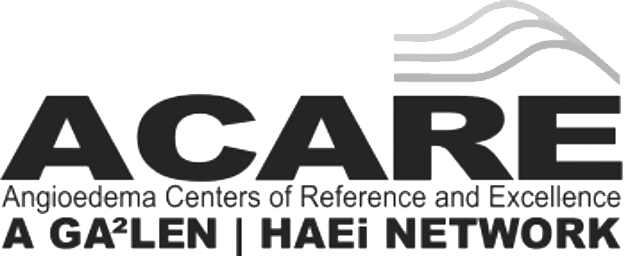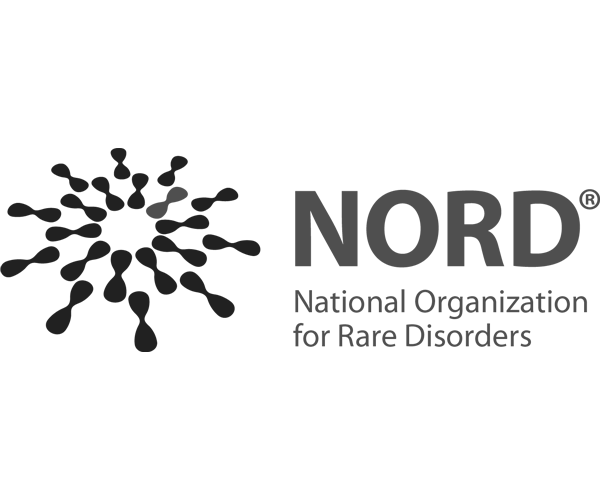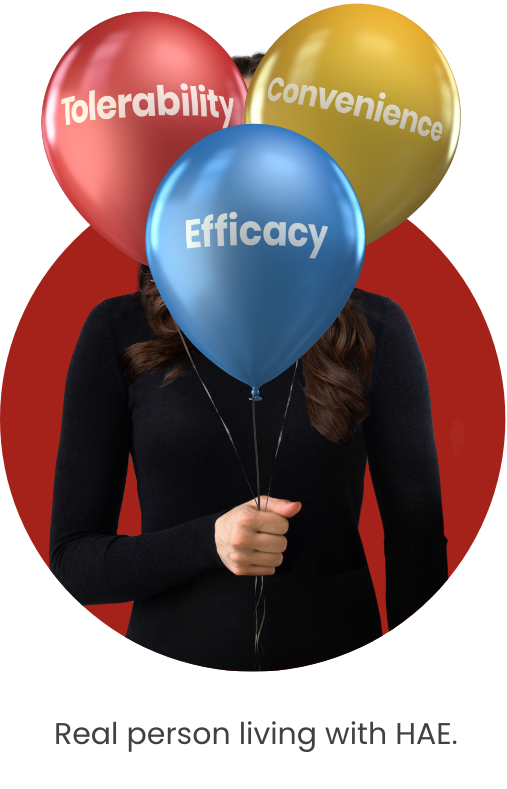Don’t miss what’s next in HAE
DISCOVER A WORLD OF RESOURCES FOR YOU AND PEOPLE WITH HAE
YOU’RE NOT ALONE—
CONNECT WITH THE HAE COMMUNITY

ANGIOEDEMA CENTERS OF REFERENCE AND EXCELLENCE (ACARE)
acare-network.comThe ACARE program is a joint initiative by GA²LEN (Global Allergy and Asthma Excellence Network) and HAEi (Hereditary Angioedema International) with the aim of developing and accrediting an interactive network of centers of reference and excellence in angioedema management.
Learn more
HEREDITARY ANGIOEDEMA ASSOCIATION (HAEA)
HAEA.orgA non-profit advocacy organization serving people with HAE and their caregivers. Through a passionate commitment to the HAE community, they offer a wide variety of services and resources that further HAE education, clinical research, community engagement, access to medications, personalized support networks, and a wide range of services to help people living with HAE lead a normal life.
Learn more
HAE INTERNATIONAL (HAEi)
HAEi.orgA global non-profit network of patient associations dedicated to improving the lives of people with HAE. They are a group of compassionate HAE patients and caregivers who make it their life’s work to raise awareness of HAE, improve time to diagnosis, and fiercely advocate for approval and reimbursement of lifesaving therapies to everyone suffering from HAE.
Learn more
HAEi LEAP
youngsters.haei.org/leap-welcome-program/An educational program, developed by HAEi, that allows young people to learn new skills and develop as individuals and advocates.
Learn more
NATIONAL ORGANIZATION FOR RARE DISORDERS (NORD)
rarediseases.org
A comprehensive resource for people with a rare disease and their caregivers, including rare disease facts and statistics, information on living with a rare disease, mentoring organizations, improving clinical care, and community support.
NORD and the NORD logo are registered trademarks of the National Organization for Rare Disorders. NORD is a registered 501(c)(3) charity.
See the HAE glossary of key terms
Resources


Find more helpful resources, including
“The Guide to Women with HAE” at haea.org and
the downloadable HAE TrackR app at haei.org
The third-party resource cited above is for the reader’s information only. Pharvaris does not endorse and is not responsible for the content included in this resource.
FREQUENTLY ASKED QUESTIONS (FAQs)
This information is not intended to replace a healthcare provider’s advice. Please consult your healthcare provider for medical guidance based on your individual needs.
What is HAE?
Hereditary angioedema (HAE) is a rare genetic disease that affects only about one person in 30,000 to one person in 80,000 worldwide. It causes sudden and painful swelling in the body that can last for days if left untreated. The pain and swelling can be disabling—making HAE physically and emotionally hard for people living with it. HAE is unique to each person. While one person may have many attacks in a month, another person may go months without one.
What are the symptoms of HAE?
HAE can appear in any part of the body, but is most common in the hands, feet, genitals, stomach, face, and throat. Attacks of the airway are particularly dangerous because they can cause death from being unable to breathe. HAE attacks can start in one location and spread to another. In general, you cannot predict when an attack will happen. In fact, the area, number, and severity of attacks can change over time. However, certain triggers have been found to increase the chance of an attack, such as physical injury, stress, or even excitement. Before an attack, some patients may notice early warning signs, called prodromes, such as tingling, rash, fatigue, or nausea.
Is there a cure for HAE?
While there is no cure for HAE, there are several ways to manage it, including infusions, injections, or oral medications. Management falls into two categories: one way is to prevent swelling and the other is to treat an attack when it happens. Today’s HAE management may come with trade-offs that require people to choose among options that work well, are tolerable, and/or are convenient to use.
Why is HAE so hard to diagnose?
Because HAE is so rare, healthcare providers may not have heard of it. The swelling HAE causes may be mistaken for an allergic reaction or other conditions, such as appendicitis, when involving the abdomen. This can lead to delays in getting the right diagnosis, not getting the proper treatment, and having unnecessary medical procedures.

Burden of HAE Management

Living with HAE
References
- Abdulkarim A, et al. Hereditary angioedema. In: StatPearls [Internet]. Treasure Island (FL): StatPearls Publishing; 2023. https://www.ncbi.nlm.nih.gov/books/NBK482266/
- Anderson J, et al. Allergy Asthma Clin Immunol. 2021;17(1):60.
- Angioedema Centers of Reference and Excellence. Who we are. Accessed May 23, 2024. https://acare-network.com
- Aygören-Pürsün E, et al. Allergy. 2013;68(8):1034-1039.
- Aygören-Pürsün E, et al. Orphanet J Rare Dis. 2014;9(99):1-9.
- Azmy V, et al. Allergy Asthma Proc. 2020;41(Suppl 1):S18-S21.
- Banerji A, et al. Allergy Asthma Proc. 2015;36:213-217.
- Banerji A, et al. Ann Allergy Asthma Immunol. 2020;124:600-607.
- Betschel SD, et al. J Allergy Clin Immunol Pract. 2023;11(8):2315-2325.
- Betschel SD, et al. Allergy Asthma Clin Immunol. 2024;20(43):1-8.
- Betschel SD, et al. Allergy Asthma Clin Immunol. 2025;21(25):1-11.
- Broderick L, et al. Orphanet J Rare Dis. 2025;20(16):1-11.
- Busse PJ, et al. N Engl J Med. 2020;382:1136-1148.
- Busse PJ, et al. J Allergy Clin Immunol Pract. 2021;9(1):132-150.
- Castaldo AJ, et al. Ann Allergy Asthma Immunol. 2025 May 23:S1081-1206(25)00258-3.
- Chong-Neto HJ. World Allergy Organ J. 2023;16(3):100758.
- Covella B, et al. Future Pharmacol. 2024;4(1):41-53.
- Data on file, Pharvaris.
- Everyday Health. Speaking hereditary angioedema (HAE): a glossary of terms used to describe symptoms, tests, treatments, and more. Accessed May 23, 2025. https://www.everydayhealth.com/hereditary-angioedema/glossary-of-terms-used-to-describe-symptoms-tests-treatments-and-more/
- Farkas H, et al. Clin Transl Allergy. 2021;11(4):e12035.
- Ferreira G, et al. J Investig Allergol Clin Immunol. 2023;33(5):332-362.
- Firazyr [prescribing information]. Shire Human Genetic Therapies, Inc. Accessed June 6, 2025. https://www.accessdata.fda.gov/drugsatfda_docs/label/2024/022150s016lbl.pdf
- Food and Drug Administration. The voice of the patient – hereditary angioedema. Published May 2018. Accessed May 23, 2025. https://www.fda.gov/files/about%20fda/published/The-Voice-of-the-Patient—Hereditary-Angioedema.pdf
- Geba D, et al. J Drug Assess. 2021;10(1):51-56.
- Gülbahar O. Balkan Med J. 2021;38(2):73-81.
- Haegarda [prescribing information]. CSL Behring GmbH. Accessed June 6, 2025. https://www.fda.gov/media/105611/download
- Hereditary Angioedema Canada. Learning to live with hereditary angioedema. Accessed May 23, 2025. https://haecanada.org/wp-content/uploads/sites/64/2020/10/HAE-Canada-patient-booklet-Updated-2020-v2.pdf
- Hereditary Angioedema International. About HAEi. Accessed May 23, 2025. https://haei.org/about-haei/
- Hereditary Angioedema International. Frequently asked questions. Accessed May 23, 2025. https://haei.org/hae/faq/
- Hsu FL, et al. Allergy Asthma Clin Immunol. 2022;18(64):1-9.
- Jean-Baptiste M, et al. Orphanet J Rare Dis. 2022;17(232):1-12.
- Johnston DT, et al. Allergy Asthma Proc. 2020;41:S43-S46.
- Leibovich-Nassi I, et al. Clin Rev Allergy Immunol. 2021;61:15-28.
- Lima H, et al. Front Allergy. 2023;10(4):1-5.
- Lo SH, et al. Pharmacoecon Open. 2022;6(2):231-239.
- Longhurst HJ, et al. Br J Hosp Med (Lond). 2019;80(7):391-398.
- Lumry WR, et al. Allergy Asthma Proc. 2020;41(Suppl 1):S08-S13.
- Manning ME. Allergy Asthma Proc. 2020;41(Suppl 1):S22-S25.
- Maurer M, et al. Allergy. 2022;77(7):1961-1990.
- Mayo Clinic. Hives and angioedema. Accessed May 23, 2025. https://www.mayoclinic.org/diseases-conditions/hives-and-angioedema/symptoms-causes/syc-20354908
- National Organization for Rare Disorders. Hereditary angioedema. Accessed May 23, 2025. https://rarediseases.org/rare-diseases/hereditary-angioedema/
- Pagnier A, et al. Pediatr Allergy Immunol. 2024;35:e14268.
- Purdue University. College of Science. Career development. Accessed May 23, 2025. https://www.purdue.edu/science/careers/what_can_i_do_with_a_major/Career%20Pages/immunologist.html#:~:text=Immunologists%20are%20research%20scientist
- Radojicic C, et al. Allergy Asthma Proc. 2021;42(3):S4-S10.
- Riedl MA, et al. Ann Allergy Asthma Immunol. 2017;119(1):59-64.
- Riedl MA, et al. Allergy. 2020;75(11):2879-2887.
- Riedl MA, et al. Allergy Asthma Proc. 2021;42:S17-S25.
- Savarese L, et al. Allergy Asthma Proc. 2021;42(1):e1-e7.
- Shamanaev A, et al. Front Physiol. 2023;14:1146834:1-13.
- Smith TD, et al. Ann Allergy Asthma Immunol. 2024;133:380-390.
- Soteres DF, et al. Clin Case Rep. 2021;9(11):e05086.
- Takhzyro [prescribing information]. Dyax Corp. Accessed June 6, 2025. https://www.accessdata.fda.gov/drugsatfda_docs/label/2023/761090s010lbl.pdf
- US Hereditary Angioedema Association. Conquering hereditary angioedema together. Accessed May 23, 2025. https://www.haea.org/
- US Hereditary Angioedema Association. About hereditary angioedema. Accessed May 23, 2025. https://www.haea.org/pages/p/what_is_hae#:~:text=Symptoms%3A%20HAE%20Attacks,those%20in%20the%20same%20family%204
- US Hereditary Angioedema Association. Treatments. Accessed May 23, 2025. https://www.haea.org/pages/p/treatments
- Wedner HJ, et al. J Allergy Clin Immunol Pract. 2021;9(6):2305-2314.e4.
- Zacek L. Nursing. 2022;52(12):44-50.
- Zanichelli A, et al. Ann Allergy Asthma Immunol. 2016;117:394-398.
- Zuraw BL. World Allergy Organ J. 2010;11:S25-S28.
- Zuraw BL, et al. Allergy Asthma Proc. 2025;46:209-217.





